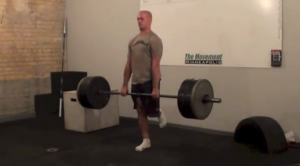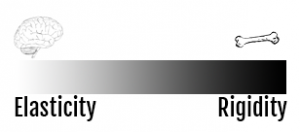
Warning: There is no science on the road ahead. If you’re looking for a bunch of pubmeds and a strong empirical case, you’re not going to find one. This is simply my informed opinion developed over years of observation and practice.
As I was wrapping up the final edits on Off The Floor I had a realization. I completely left out single-leg deadlifts. I mean, I didn’t even mention them. In a book that I set out to be comprehensive about deadlifting, my instant reaction was that it was a pretty big oversight. Upon a moment of reflection however, I realized I left them out for a reason. I neglected the single-leg deadlift because frankly, I think they’re a bad idea the vast majority of the time. If you want to get really ridiculously strong, they might not even have a place at all. More “athletic”, whatever that means? Maybe. But the ways I see them being used? Not so much at all.

One of the paradigms I use to look at the tissues of the body, and think about training the body is that of a spectrum between elasticity and rigidity (or plasticity.) As a quick aside, when most people think of the word plasticity they think of the ability to me molded, or malleability. This is not inaccurate, but when we talk about the body a plastic deformity is a deformity from which the tissue will never return to it’s original shape. An elastic deformity is a change in shape to which the tissue will return to its exact original shape.
All of the tissues in the body exist on this spectrum. The most elastic tissue in the body, the brain, is constantly changing and adapting. Think about how quickly you can learn a new skill. Literally from one minute to the next you can not know how to do something, have someone show you, and now you are able to do it (depending on the level of skill required, of course.) For this to happen, tissue changes are physically occurring in your brain. On the other end of the spectrum, it can take years for bone remodeling to occur.
What the hell does any of this have to do with the single-leg deadlift?
From what I’ve seen, there are two types of people who perform single-leg deadlifts:
- Those that aren’t strong enough to perform it correctly, with good biomechanics.
- Those that are strong enough to perform it correctly with good biomechanics, and are strong enough to hurt themselves doing it.
The second type of person is actually the one that I am the most interested in, but I will address the first type in a moment. The stronger person, with good mechanics, is able to transmit a tremendous amount of force through Bret Contreras’ favorite part of the body, the lumbo pelvic hip complex. If you consider a contra-lateral single-leg deadlift with one foot off the ground, and the weight in the opposite hand of the working leg, you have a long lever (the entire upper body) transferring all of the leverage of the weight through – essentially – the one hip socket. What happens when you transfer a lot of force through the body? You increase rigidity. It’s one of the reasons we train and lift heavy weights. Stronger bones, bigger muscles, and tougher connective tissue.
However, in general, people who are strong are the ones who actually need more elasticity in their body – not more rigidity. Think of how the 800lb squatting powerlifter moves. Certainly the rigidity he has developed in his body helps him be able to squat 800, but are you telling me that a few yoga classes wouldn’t help him move a little better in the rest of the world? In my experience, not only will a little return to elasticity help him move better in general, but he’ll squat better too.
The actual case I see this most often in is the fitness aficionado who has some lower back pain or “SI” pain issues. They read some articles about how single-leg deadlifts are the holy grail of fixing everything, and they get to work doing unilateral everything. What happens? The pain issues get worse. Why? Well, in these particular cases I believe it’s because they’re introducing even more rigidity when what they need is more elasticity.
So what about the person who isn’t strong enough to do it with good biomechanics? Wouldn’t the rigidity help them? Yes, probably. But we want rigidity in the right places, right? In that case, the better way to build rigidity in the right places is to simply use heavier weights like you can with a bilateral deadlift. I’ve observed this time and time again with my general population clients at The Movement Minneapolis. Within the first few months, most people aren’t even strong enough to balance on one leg to perform a SLDL. After a few months of bilateral deadlift work, they can easily perform a solid SLDL. Which still happens very rarely because of the logic I outline here.
Does that mean the single-leg deadlift has no place at all? Absolutely not. And in fact, I think you negate a lot of the problems with it simply by touching a toe to the ground, or raising a foot up on a box as in a Bulgarian Split Squat so that some of that stablizing force has somewhere to go, other than calling on the LPHC to do it all. I am not saying you should never ever do single-leg deadlifts – but I am saying use sparingly. And if you’re currently in back pain – drop them completely the fuck out of your program.

I've distilled everything I know about deadlifts into Off The Floor: A Manual for Deadlift Domination. If you want to make truly massive progress in your own pull, jot your contact info down in the box and I'll send you some great deadlift content plus drop you a line the second I unveil Off The Floor. (Don't worry, it won't be long now.)



I do them only to correct a muscle imbalance that I got from doing bilateral work only for a work after Acl reconstruction. Stronger muscles roll over and bam a few years later massive glute imbalance .IM AN idiot or that. Single leg deadlifts and single leg hip thrusts are really helping to build it back up. But I’ll never try to go too heavy. In fact it hurts the knee . But it’s good to give the lagging muscles some stimulation as they get sore and the stronger muscles don’t , so it must be helping
I have met you a couple times and have a lot of respect for your experience and they way you present.
I have always wondered why I do not handle SLDL well…I avoid them, and when I do them because I feel pressured to pursue more single leg work, it seems my left hip joint hurts– in right in the socket where the femur and acetabulum meet. Maybe its because my alignment is off? Regardless, you make an excellent point that I can’t believe I didn’t associate long ago–more force through one joint that may not be aligned properly=pain and possible injury. Thank you!
Thanks for the comment Laura! Good to see you again at NCFS. I know exactly what you mean about the pressure to do single-leg work. It’s good if it tests well, but if it doesn’t there are plenty of other things you can do.